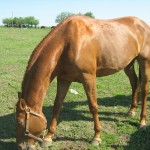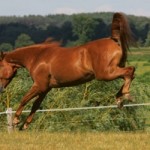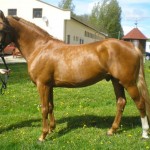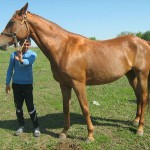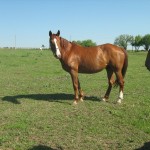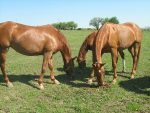Pleven Horse
The Pleven belongs to the category of half-bred horses, developed in Bulgaria, by crossing the Arab and Thoroughbred equine breeds. Their excellent free-flowing gaits along with smooth movements make them excel in a variety of equestrian sports including show jumping and dressage.
Pleven Horse Pictures
- Pleven Horse Images
- Pleven Horse Jumping
- Pleven Horse Pictures
- Pleven Horse Stallion
- Pleven Horse
- Pleven Horses
Quick Information
| Other Names | Plevna, Pleveska |
| Temperament and Personality | Calm, even-tempered and willing-natured |
| Physical Characteristics | Straight profile; long muscular back; nice topline; long back; broad and deep chest; high withers; muscular quarters; slightly sloping croups; strong bone joints; well-conformed, muscular legs; well-defined tendons; hard feet; hard and sound hooves and a well-carried tail. |
| Colors | Chestnut |
| Common Use | Riding, show jumping, dressage |
| Height | 15.2 hands to 16 hands |
| Health | .No breed-related health problems but proper veterinary checkup is essential for a sound health |
| Popular Traits | Agile, easy-to-maintain, smooth gaited |
| Feeding/Diet | Hay and Grass |
| Gaits | Free flowing, natural and gracious |
| Country of Origin | Bulgaria |
| Year/ Time of Development | End of the 19th century |
| Ancestors | Arab horse, thoroughbred horses |
History
The development of this breed began in 1898 at the Klementina stud in Bulgaria, presently attaining the name of Georgi Dimitrov Agricultural Center after the famous Bulgarian Communist Leader. The Arab horses, as well as the half-bred mares, were crossed with the half-bred Russian stallions for the production of this breed which may have probably attained its name from the place named Pleven in Bulgaria, from where it could have possibly originated. These horses gained official recognition in the year 1951. The inclusion of the Gidran stallions, developed in Germany along with the some English thoroughbred horses was made eventually for the purpose of refining them to be a powerful athletic horse as well as bringing about an improvement in their size. The Pleven has a well-established genealogy with 13 families as well as seven family lines. In fact, being selectively bred even at present in Bulgaria, attempts are still on to enhance its size further so that it has a good prospect as an international sports horse.


